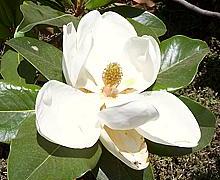
PLU Codes
Numeric
Alphabetic
A B C D
E F G H
I J K L
M N O P
Q R S T
U V W X
Y Z
It is impossible to put this stuff in any rational order, and maintaning an alphabetical index is impossible when everything has at least 6 names - so, if you are looking for something specific, and don't see it right off, use the convenient Search Engine.
Basal Angiosperms
- In the BeginingMagnoliids - Clade
- Archaic Orders: Laurels, Black Pepper, Magnolias, etc.Monocots - Clade
- Grasses, Grains Orchids, Onions, Gingers, Palms, Bananas, etc.Eudicots - Clade
- Most Vegetables, Fruits, Herbs and Spices.- Amaranths - Family Amaranthaceae
- Annona
- Cherimoya, Custard Apple, Paw Paw & the like
- Arums
- Asparagales - Order
- Bananas
- Beans - Fabaceae - Beans, Peas, Lentils
- Bellflowers
- Bladdernuts
- Borages
- Buckthorn Family - Rhamnaceae
- Buckwheat & Sorrel - Polygonaceae
- Buttercup Order
- Poppies
- Nigella
- Barberries
- Cactus
- Cabbages - Brassicales
- Cabbages & Mustards - Brassicaceae.
- Papayas - Caricaceae.
- Moringa - Drumstick Tree, Horsradish Tree, Moringaceae.
- Nasturtiums - Tropaeolum.
- Capers - Capparaceae.
- Saltwort - Pickleweed, Batis.
- Caltrops
- Carnations
- Amaranths
- Buckwheat & Sorrel - Polygonaceae
- Cactus
- Malabar Spinach
- Purslane
- Cashews
- Cashew
- Mango
- Pepper Trees
- Pistachio
- Poison Ivy
- Sumac
- Citrus
- Lemon, Lime, Orange, Grapefruit, Citron, Pomelo, Kumquat, etc.
- Cucurbits - Vine Crops - Cucurbitaceae
- Daisies
- Lettuce & Chicory - Leaves & Roots
- Thistles - Artichokes, Cardoons, Burdock, etc.
- Seeds, Roots & Oils - Sunflowers, etc.
- Herbs, Flowers & Vegetables - Leaves, Stems & Flowers
- Dogwoods - Order Cornales
- Elephant Apple - Dilleniaceae family
- Ericales - The Heather Order
- Brazil Nut Family
- Heather Family - Blueberries, Cranberries, etc.
- Ebony / Persimmons
- Sapote Family
- Kiwi Fruit Family
- Camellia / Tea Family
- Gentian Order
- Gentianales
- Gentian Family - Gentianaceae
- Dogbane Family - Apocynaceae
- Strychnine Family - Loganiaceae
- Madder Family - Rubiaceae
- Gingers
- Grapes
- Grasses
- Bamboo
- Grains
- Barley
- Corn (Maize)
- Rice
- Wheat
- Other Grains - Oats, Rye, etc.
- Other Grasses - Lemongrass
- Hemp Family
- Herbs
- Holly Family - Ilex
- Honeysuckles -
Order Dipsacales
- Elderberries
- Honeysuckle
- Mâche - Corn Salad
- Iris - Family Iridaceae
- Laurels
- Lamiales - order Lamiales
- Mint Family
- Olives - family Oleaceae
- Sesame - family Pedaliacae
- Verbinas - family Verbenaceae
- Others
- Lilies - Order Liliales
- Mahogany
- Mallows
- Morning Glory - genus Ipomoea
- Sweet Potato
- Water Spinach
- U.S. Yams
- Mulberries
- Mustards - Brassicaceae -
Cabbage, Mustards, Turnips, Radishes
- Leafy Greens - Brassica - Cabbages, Mustards Greens, etc.
- Flower Heads - Brassica - Broccoli, Cauliflower
- Roots & Stems - Brassica - Radishs, Turnips, Kolrabi
- Pickles & Preserves - Sauerkraut and others.
- Brassicaceae Family Tree
- Myrtles
- Pomegranate
- Guava
- Evening Primrose
- Cloves
- Daun Salam
- Tea Tree
- And Many Many More
- Nightshades
- Nut Trees
- Beech
- Birch
- Chesnut
- Hazlenut
- Oaks
- Walnut
- "Odd Ones" - An obsolete page. All its former inhabitants have been properly placed elsewhere.
- Oleasters
- Onions - [genus Allium]
- Onions
- Shallots
- Garlic
- Leeks
- Chives
- Ramps
- Orchids - Orchidaceae
- Oxalis
- Palms
- Pandanus - Screwpine - a giant among lilies
- Parsley, Aralias & Pittosporums.
- Pepper Family - Piperaceae
- Plants & Animals - how it all began.
Poales
- Order Poales- Bromeliads - Family Bromeliaceae
- Grasses & Grains - Family Poaceae
- Sedges - Family Cyperaceae
- Cattails - Family Typhaceae
- Proteus
- Lotus, Macadamia.
- Purslane - family Portulacaceae
Roses
- Order Rosales- Pome Fruit - Apples, Pears, Loquats, Quinces
- Stone Fruit - Peaches, Apricots, Almonds, Cherries
- Berries - Strawberries, Raspberries, Blackberries, Rose Hips
- Hawthorn
- Sapindales
- Santalales Sandlewood, Miscletoe, other parasites
- Sapote - Sapotaceae
- Saxifrage - Gooseberries and Currants.
- Sedge
- Water Chestnut
- Soapberries
- Spices
- Violets - Order
- Spurge - Euphorbia
- Mangosteen Family - Clusiaceae - Kokum, Gambooge etc.
- Others
- Water Lily
- Water Plantains
- Yam



